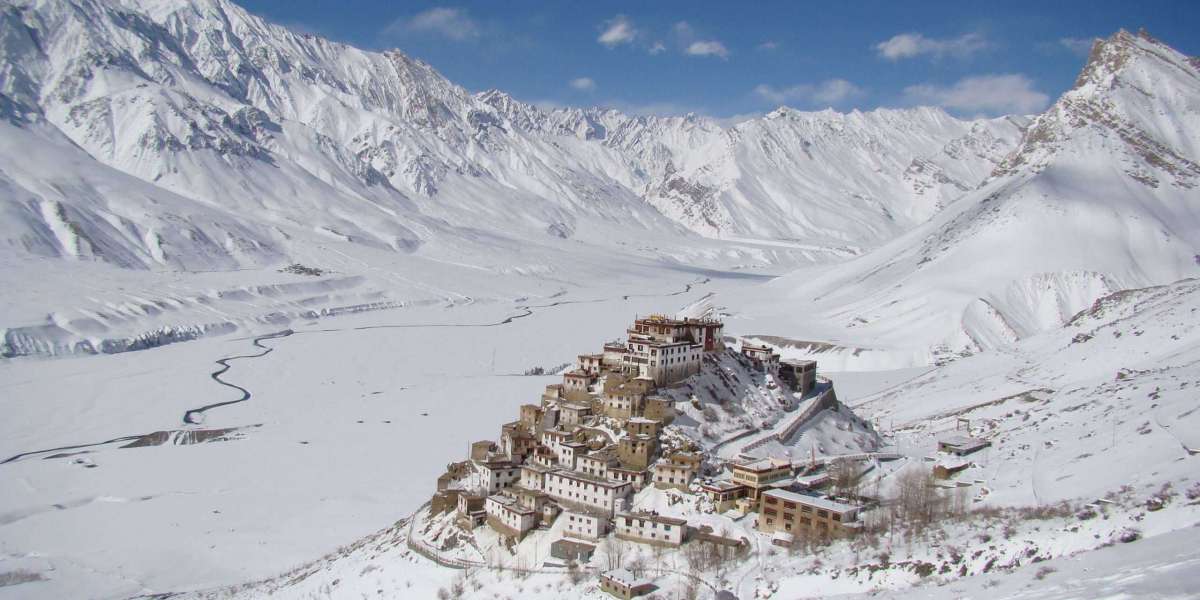Spiti Valley – A Complete Travel Guide
Spiti Valley, which is located in between Tibet and India, is literally translated as "the middle land." Though its topography and temperature might be intimidating, stick with us! We would like to explain to you how lovely and distinctive the Spiti Valley is and why it ought to be on your vacation itinerary.
The landscape is undeveloped, with minimal vegetation, snow-capped mountains, and a wealth of undiscovered wonders just waiting to be discovered. Being less popular with tourists than other Himachali towns is one of the finest reasons to visit Spiti. Spiti Valley is an excellent example of what we refer to as a "off-beat journey" since it offers the chance to explore some of the highest passes in the world, ancient monasteries, and crystal blue lakes without any modern disturbance.
When to Visit Spiti Valley is Best
The Spiti Valley is well recognized for having a harsh climate. The severe winter months of December through March are when you can see the valley is completely blanketed with snow. It may snow at any moment throughout these months, and it may be as cold as -20 degrees Celsius. The valley starts to awaken as the summer months draw near. As the roads widen, more travelers arrive. As some vegetation begins to bloom, the temperatures in the months of April and May are comfortable. As the snow melts, lakes begin to develop.
Tour Schedule for the Spiti Valley
So, here is an example schedule for your trip to Spiti Valley. You'll note that this schedule moves at a sluggish pace, and there's a good reason for it. Your body adjusts to the greater heights as you steadily climb.
Day 1:
Chandigarh is often where the tour begins. You are free to tour Chandigarh's lakes, gardens, and precisely designed buildings on this day when you arrive and settle in. Stay in Chandigarh tonight.
Day 2:
Today, travel to Himachal Pradesh! You pass by several little towns and villages as you go through forested slopes. Enjoy the scenery because you are going to see a whole different side of Himachal Pradesh. when you go to Thanedar,remain in the orchards. Stay in Thanedar tonight.
Day 3:
Today, travel to Sangla Valley. Before reaching Sangla along the Indo-Tibetan route, stop in Rampur, Bushahr, and Karcham. Stay in Sangla tonight.
Day 4:
Today, explore Sangla. Visit Chitkul later (it takes an hour to go there and back). Chitkul is curiously the last settlement in India before the border with Tibet. Come back and spend this evening at Sangla.
Day 5:
Continue your eastward trek by returning to Karcham along the Indo-Tibetian route. Before you reach Kalpa, keep an eye on the roads as they ascend through the slopes of the pine forest. Spend the afternoon exploring the many stunning nearby locations. Stay in Kalpa tonight.
Day 6:
Climb steeply into the mountains! You will have company on this day from the River Sutlej. Arrive at Nako later in the day.
Stop at the man-made Nako Lake before traveling to Gue, the home of the Lama Mummy. See the mummified remains of monk Sangha Tenzin here. Visit the 1,000-year-old Tabo Chos-Khor Monastery later on by traveling to Tabo. Arrive at Kaza, the Spiti region's capital. Spend this evening in Kaza.
Day 7:
Drive to Dhankar today. Visit the 1,200-year-old Dhankar Gompa, which is perched on a hilltop and offers stunning views of the Spiti Valley. Prior to going to Lingti Valley, stop by the Dhankar Lake later. Visit the isolated Himachali hamlet of Lhalung to see how they live. Listen to the locals discuss various urban legends about how they think the colors of the mountains here vary according to the emotions of the deity. Return to Kaza for the evening.
Day 8:
Today, go to the Ki (also spelled Kee or Key) Gompa, which is the most well-known site in the Spiti Valley. Around 350 monks live in a collection of whitewashed homes located on a conical hill. If you turn south from the monastery, the scenery is quite beautiful. Explore some more of the stunning Himalayan settlements, including Kibber, Chicham, and Hikkim. Visit Langza later and be amazed by the magnificent Mt. Chau Chau Kang Nilda. Return to Kaza for the evening.
Day 9:
Drive up the Kunzum Pass until you reach Chandratal, a crescent-shaped glacier lake, and then turn around and continue back towards Manali. Once here, take a stroll along the lake and take in the numerous geological wonders and white-capped hills. Spend the evening camping in Chandratal.
Day 10:
Return to Manali by car. Explore the town's neighborhoods by foot and stop by Old Manali and Vashisht Temple. Before calling it a night, take a stroll along the Mall Road and have dinner at a neighborhood eatery. Stay in Manali tonight.
Day 11:
Drive from Manali to Chandigarh on day 11. The remainder of the evening is free time. Stay in Chandigarh tonight.
Day 12:
On the twelfth day, leave Chandigarh and travel to your hometown.This is an example of a typical Spiti Valley itinerary. Of course, you may completely alter this schedule based on your travel preferences and the amount of days you have available.
Conclusion
This is an example of a typical Spiti Valley itinerary. Of course, you may completely alter this schedule based on your travel preferences and the amount of days you have available.



